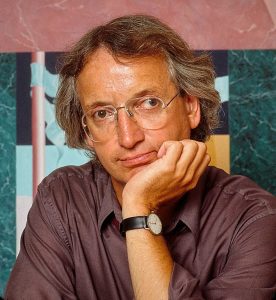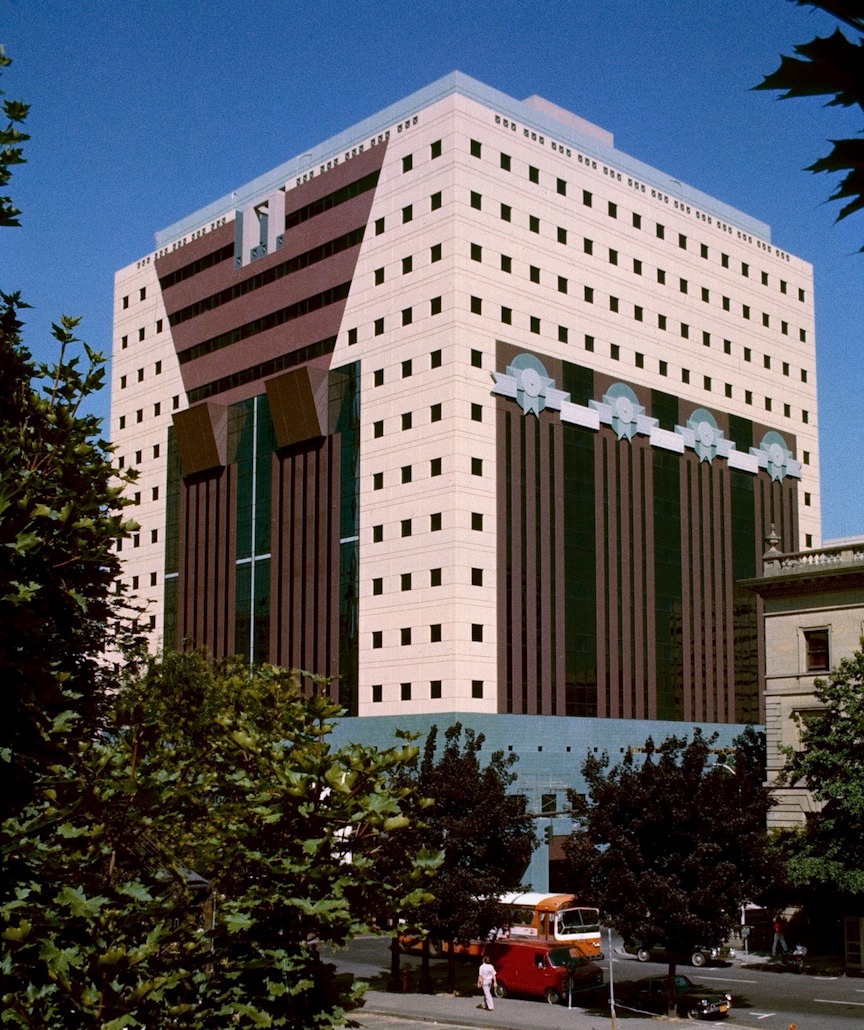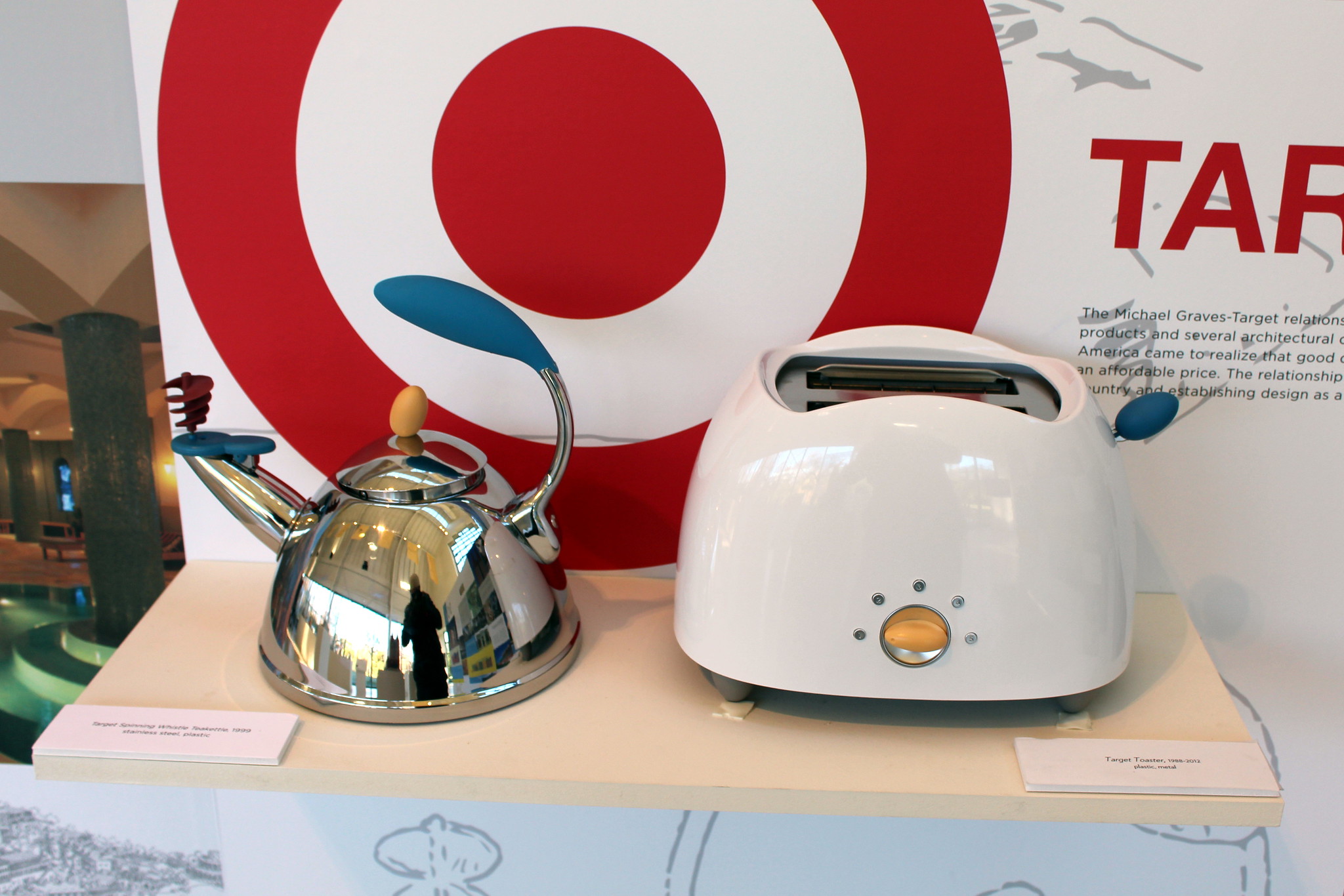
Photo info ...
Credit: Bernard Gotfryd collection at the Library of Congress via Wikimedia CommonsView Source
(July 9, 1934-Mar. 12, 2015). Born in Indianapolis, Michael Graves earned international acclaim as the foremost practitioner of architectural “postmodernism,” a style he practiced globally and taught during his career at Princeton University.
After graduating from in 1950, Graves earned his bachelor’s degree from the University of Cincinnati and his master’s degree from Harvard. In 1960, he won the prestigious Prix de Rome, which supported a two-year sojourn in Italy. He returned to America in 1962 to begin his teaching career at Princeton University, an appointment he held until his retirement in 2001. In 1964, Graves founded Michael Graves & Associates, a firm that continued its architectural and design practice after Graves’ death. The firm lists a resume of 350 buildings, 2,500 designed products, and 300 awards.
Early in his career, Graves achieved a respectable measure of fame as a member of the “New York Five,” a group of modernist architects also called “the Whites” for their use of white as the predominant color of their buildings. In the late 1970s, Graves turned decisively away from the reductive, essentially abstract modernism toward an evolving aesthetic that became known simply as postmodernism. Where modernism offered unembellished geometry and abstract form that often lacked detectable emotional character, postmodernism embraced a set of visually and culturally robust design elements that made buildings enjoyable and broadly legible for the everyday citizen, blending architectural tradition and context, color, decoration, humor, and symbolism.

Graves did not worry much about the label. He preferred to speak of his motives as humanistic, with a fundamental goal of designing things, whether scaled to skyscrapers or teapots that brought delight and resonated with a sense of cultural continuity stretching back centuries or, in the case of Indianapolis, decades. When asked, Graves recalled his childhood awe of the grand public buildings in the heart of the city that helped lay the emotional foundations for his mature designs.
In 1982, Graves’ reputation, and the loose but larger idea of postmodernism, gained national prominence with the completion of the Portland (Oregon) Municipal Services Building (or simply the Portland Building). Rising to 15 stories, clad in a rich palette of colorful materials, the building is generally acknowledged as the first significant public structure designed in a postmodern style.
At 48, Graves became an overnight success. Paul Goldberger, the architecture critic for the , praised Graves as “surely the architect of the hour.” He had attained, Goldberger continued, “a kind of celebrity shared by no other architect of his generation—and, indeed, probably by no other architect practicing today except Philip Johnson.” Not so ironically, Johnson had been one of the three-person jury that selected Graves for the Portland commission.
After 1982, Graves attracted an ongoing parade of important commissions, including the 26-story Humana Building in Louisville, Kentucky, opened in 1985; the Dolphin Hotel and Swan Hotel at Walt Disney World in Orlando (1987); Ten Peachtree Place in Atlanta (1989); the American headquarters of , in , Indiana (1982), as well as the (1996) and the in 1997, and the 55-story residential skyscraper at 425 Fifth Avenue, New York City.

The pervasiveness of Graves’ brand brought him a commission in 1999 to design the temporary protective scaffolding during restoration work on the Washington Monument. His design commissions took him around the world, from Japan to Egypt to the Netherlands and Switzerland, as well as the Trump International Hotel in Florida.
Just as Graves’ work humanized contemporary architecture, he similarly brought a more comfortable, at times fanciful, sensibility to the design of furniture, appliances, and utensils. Although Graves created much of this work for designer brands such as Alessi, Steuben, and the Memphis group, he also conceptualized products for Target and J. C. Penny’s and helped democratize the idea of design quality for the everyday consumer.

During his lifetime, Graves received honors such as Fellow of the American Institute of Architects (1979), president of the Society of Fellows of the American Academy in Rome (1980-1984), the American Prize for Architecture (1994) and the National Medal of Arts, an honor President Bill Clinton bestowed upon him in 1999—as well as the Indiana Historical Society’s Indiana Living Legend recognition in 2002. In 2012, Graves won the Driehaus Award, a $200,000 prize for “achievement in the art of traditional and classical architecture.”
In 2003, Graves contracted a spinal cord infection that left him paralyzed and confined to a wheelchair. He continued to work for the final decade of his life, but focused significant time and talent on accessibility issues in residential design, as well as wheelchairs and hospital furnishings. In the last year of his life, Graves initiated plans for the Michael Graves College of Architecture and Design at Kean University in New Jersey.
The Michael Graves College is comprised of two schools, the Robert Busch School of Design and the School of Public Architecture. Both schools are dedicated to taking design and architecture to a wider public audience.

Help improve this entry
Contribute information, offer corrections, suggest images.
You can also recommend new entries related to this topic.